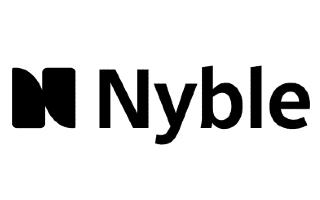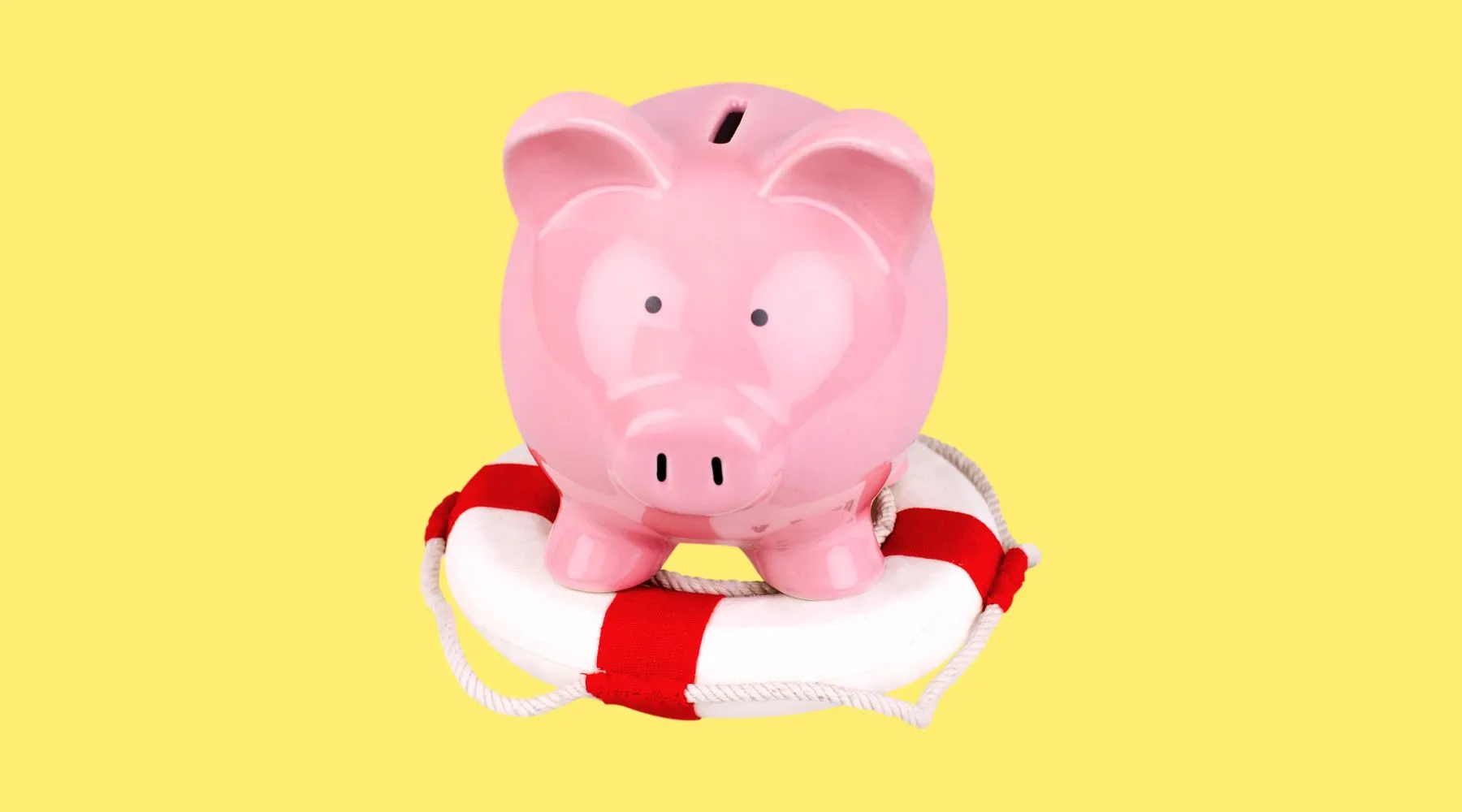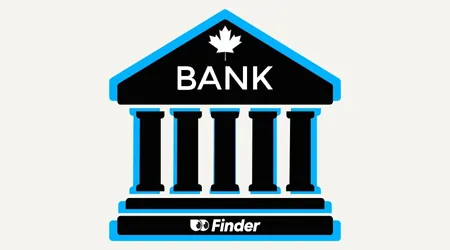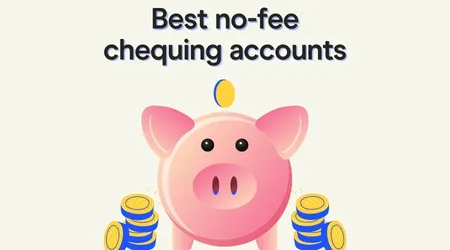 Nyble Credit Line
Nyble Credit Line
Benefits, costs and limits of overdraft protection in Canada
Learn what overdraft protection means, how it can help you avoid paying high NSF fees if you overspend, and what interest and fees apply.


Overdraft protection can save you money on fees if your account balance dips below zero. But you’ll pay a small fee for the convenience and be charged interest on the negative balance.
Keep reading to learn all about how overdraft protection works, how much various banks in Canada charge for it and about alternatives to help you save even more.
Overdraft protection is a feature available to add on most chequing accounts in Canada that allows you to continue using funds from your chequing account even when you don’t have any money in your account.
One of the main perks of overdraft protection is that it helps you avoid expensive non-sufficient fund (NSF) fees. NSF fees are charged when you don’t have enough money in your account to cover an attempted withdrawal.
Without overdraft protection, each NSF fee could cost you $45 or more. With overdraft protection, you avoid the expensive NSF fee, but will instead pay a smaller overdraft protection fee and interest.
 Nyble Credit Line
Nyble Credit Line
By signing up for overdraft protection you are essentially agreeing to a short-term loan from your bank or financial institution. This short-term loan is triggered any time your account is overdrawn, and is automatically issued for the exact amount needed to cover the shortfall.
For example, if you had $50 in your account and your insurance company tries to withdraw a bill payment of $150, your account would be overdrawn by $100.
Since you’re effectively borrowing money, you’ll often be charged interest of around 21% in addition to the overdraft fee.
Your bank charges a non-sufficient fund (NSF) fee, when you spend more than you have in your chequing account. Each NSF fee can cost you$45 or more per withdrawal attempt, which can add up if you forget about automatic bill payments or have trouble keeping track of your balance.
We’ve summarized Canadian bank and credit union overdraft interest rates and overdraft protection plan costs here:
| Bank | Overdraft interest (per annum) | Protection plan cost |
|---|---|---|
RBC | 22% | $5/month |
TD | 21% | $5/month |
CIBC | 21% | $5/month |
Scotiabank | 21% | $5/month |
BMO | 21% | $5/month |
National Bank | 21% | $5/transfer (up to once per day) |
Tangerine | 19% | $5/use (up to once per month) |
Laurentian Bank | 22% | $5/month |
Coast Capital | 21% | $5/month |
Alterna Savings | 19.99% | $2.50/month or $5/day per use |
There are two types of overdraft protection you could come across in Canada: Basic protection and linked account protection.
Basic overdraft protection is essentially a loan from the bank to cover expenses (like bill payments and debits) that would otherwise bounce due to lack of funds. When your bank covers the difference for insufficient funds, the overdrawn amount will be automatically repaid to the bank from your next deposit.
Like with any loan, you’ll have to pay interest on the overdrawn amount along with a small fee.
Linked account overdraft protection enables your bank to automatically transfer funds from a linked account to cover a transaction you’ve charged to a chequing account with insufficient funds. Linked accounts can often include a savings account, credit card or line of credit.
Because the bank isn’t lending you the money to go into overdraft with linked protection, you won’t have to pay interest on the overdrawn amount. Still, the bank will typically charge a fee for transferring money.
Also, depending on the type of account you choose to link, you may have to pay interest or cash advance fees on the money trasnferred from the account.
![]() Most chequing accounts will ask if you’d like overdraft protection when you initially set up the account. If you didn’t add it as part of your account coverage when you first opened the bank account, not to worry, as most accounts will let you add this protection (if offered) at any time.
Most chequing accounts will ask if you’d like overdraft protection when you initially set up the account. If you didn’t add it as part of your account coverage when you first opened the bank account, not to worry, as most accounts will let you add this protection (if offered) at any time.
In most cases, you can apply for overdraft protection online or from your banking app. When setting up overdraft protection, you’ll be asked what overdraft limit you’d like and you may need to approve a credit check.
The overdraft limit is the maximum amount your bank will cover should your account go into overdraft. In Canada, typical overdraft limits are between $100 and $3,000.
Overdraft protection provides a buffer against accidental overspending. Check out our guide to the best no-fee chequing accounts to find out which accounts include overdraft protection in the monthly fee (subject to credit approval).
Overdraft protection comes with 2 types of fees: A service fee and interest. The service fee is a flat fee, often around $5.00, paid monthly or every time you use overdraft protection (you may get to choose, or your bank may only offer 1 of these options). This fee may be waived with some chequing accounts.
Regardless of whether the flat fee is waived, you’ll pay interest on your overdraft balance. Interest rates vary but generally fall between 19% and 22%.
Instead of counting on overdraft protection, it may be cheaper to get a small loan from cash advance apps in Canada. You pay no interest on these cash loans, but you may pay a monthly fee.
If you only need a small amount to hold you over to your next pay, these small cash advance loans may be cheaper compared to the approximately 21% interest charged on your overdraft balance from your bank.
To make comparing even easier, we came up with the Finder Score. Interest rates, fees and features across 5+ cash advance apps are all weighted and scaled to produce a score out of 10. The higher the score the better the loan—simple.
A buffer against accidental overspending, overdraft protection is good for those who are learning to manage their money. It’s useful when teaching kids how to spend responsibly. Teens who are just beginning to take on adult responsibilities like budgeting and paying bills can benefit from having a safety net for accidentally overlooked expenses. If you’re a student on a tight budget, avoiding expensive NSF fees is a big plus.
Overdraft protection is also good if you manage a complex schedule of recurring bills and automatic payments. It can be tough to keep track of what comes out of your account and when payments are due. Having a buffer can reduce the stress of paying costly NSF fees.
The best way to avoid going into overdraft is to keep your finances healthy. To help keep your finances in good shape you should:
In theory, there’s no harm in at least applying for overdraft protection and having it as a backup on your bank account. When used sparingly, overdraft protection can be much cheaper than NSF fees. However, if you do use overdraft protection, be aware of the catches:
Ultimately, it all comes down to how much your bank charges. There are chequing accounts with relatively low-cost overdraft protection. For instance:
To make comparing even easier we came up with the Finder Score. Welcome offers, account fees and features across 60+ chequing accounts and 25+ lenders are all weighted and scaled to produce a score out of 10. The higher the score the better the account - simple.
Here are some tips to help you avoid fees and make the best use of your overdraft:
Yes, you can. Having overdraft protection doesn’t prevent you from opening and closing any bank account — as long as there is no money owing on the overdraft.
If you’re looking for a bank account with cost-effective overdraft protection, it’s important to consider how often you’re likely to use your overdraft and how much you’ll be charged for doing so.
Some bank accounts offer interest-free overdraft protection, while others do not charge a flat-fee, but do charge interest on any borrowed amount. The key is to know how you will use the overdraft protection and to calculate what it would cost for each account you are interested in opening.
To find the best bank account for your needs, check out Finder’s guide on the best chequing accounts by feature. If cutting costs is your main goal, consider narrowing your search to chequing accounts with no or low fees.
Overdrafts are definitely not your only option when it comes to borrowing:
Finally, if you find yourself overusing your overdraft, maybe the time has come to do a bit of budgeting and reorganize your finances. If it sounds like a daunting task, why not try a budgeting app?
An overdraft can be a handy addition to your bank account and can offer a valuable safety net in the event an unexpected payment pushes you into the red, for example. Applying for an overdraft is usually straightforward and there are a few low cost options available.
However, it’s important to stay within your overdraft limit and try to pay back the amount borrowed as soon as possible. Otherwise, the more you rely on your overdraft, the harder it will become to get out of it.

Explore key banking statistics and figures from the Finder: Consumer Sentiment Survey January 2025.
Read more…
Compare the features of 8 of the best no-fee chequing accounts in Canada, and find out how to avoid transaction fees.
Read more…
Earn cash, rewards points, bonus interest rates and more with these new bank account offers and promotions.
Read more…
Learn about the different types of bank accounts for your teenager and how to choose the right one.
Read more…
Compare chequing accounts and learn about our top picks. Compare different features and see which one is right for you.
Read more…
Compare and open a bank account online in Canada in as little as 5 minutes. Learn what you need to apply and how to get started today.
Read more…Your guide to saving money on gas, groceries, utilities and everyday expenses in Canada.
Explore key banking statistics and figures from the Finder: Consumer Sentiment Survey January 2025.
We compare Canada’s best banks to help you find your perfect banking match.
Explore all the latest Scotiabank promotions and offers available now.
Your guide to features and fees of the Beacon Money Account for newcomers to Canada.
Your guide to the 6 of the best Tangerine alternatives in Canada.
Earn cash, rewards points, bonus interest rates and more with these new bank account offers and promotions.
Read Finder’s BoC Interest Rate Report for forecasts from some of Canada’s brightest minds in economics and learn more about how recent rate increases could affect Canada’s real estate market.
From mortgages to high-interest savings accounts, here’s how to find the best interest rates in Canada.
Compare and open a bank account online in Canada in as little as 5 minutes. Learn what you need to apply and how to get started today.